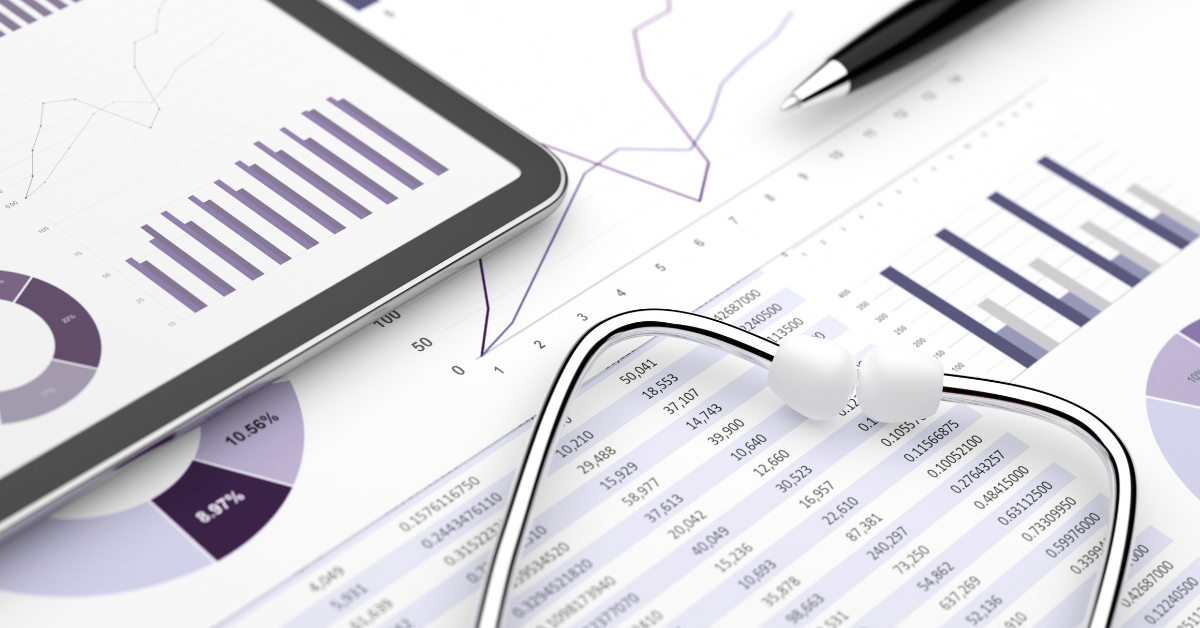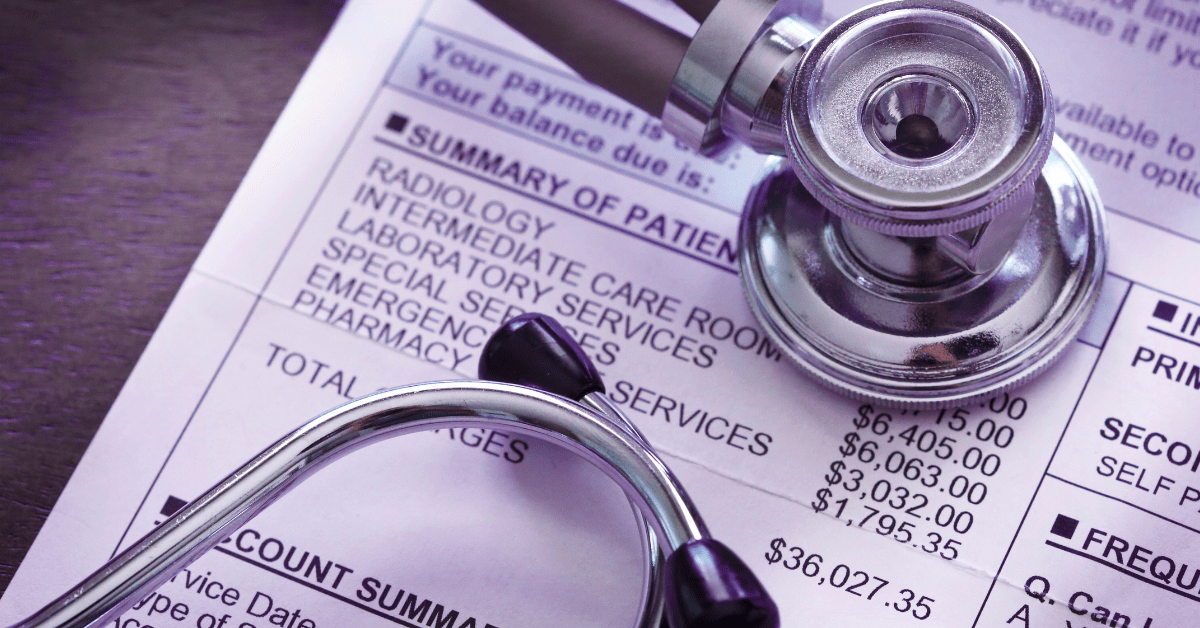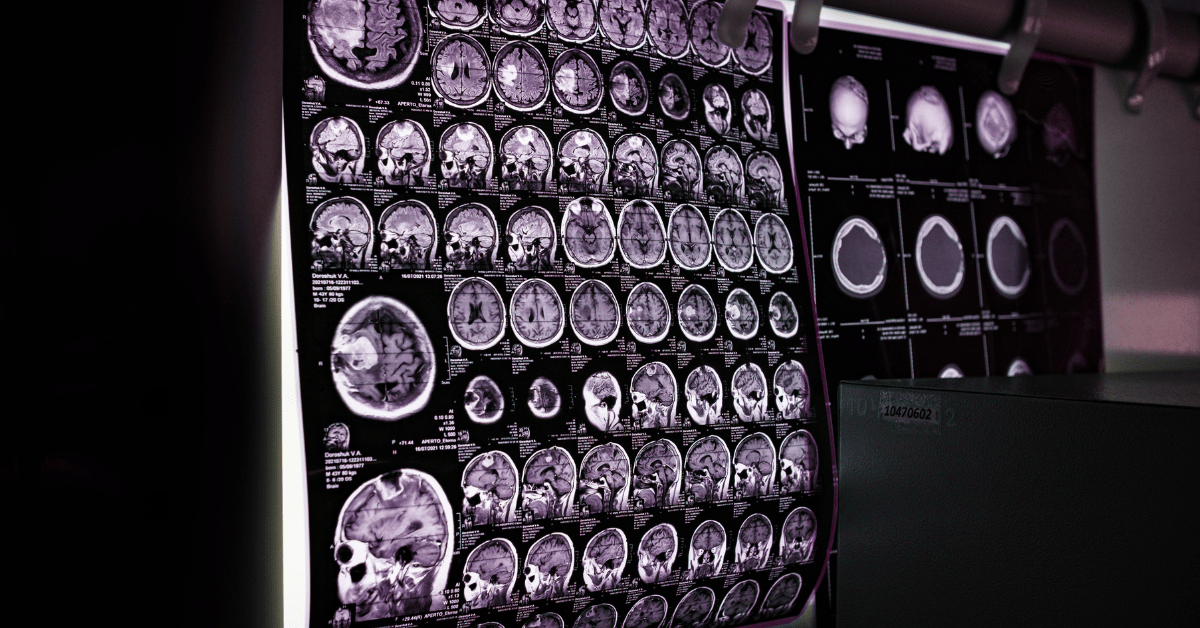This guide breaks down common healthcare data formats used in integrations – what they’re best for, where they show up in real workflows, and what tradeoffs to expect. We’ll cover flat files (CSV), HL7 v2 messaging, structured clinical documents (XML/HL7 CDA), common data models (CDMs), and API-based exchange (including FHIR).
In healthcare, making data flow smoothly is key to better patient care, smoother operations, and advancing medicine. Different tools are used to handle healthcare data properly, including formats like FHIR, IHE, and more. These tools are essential for healthcare integrations.1
Data is often seen in flat files, as structured documents, such as XML and HL7, or through APIs. Each way of using data has its good points and drawbacks. When picking a format, hospitals and other healthcare places choose what works best for them.2
Key Takeaways
- Healthcare systems use many formats for sharing data, including FHIR, HL7, and APIs.
- For research and sharing info, flat files, common structures, and specific docs are often used.
- The best format is chosen based on what a healthcare place needs.
- Using the same formats helps keep data clear and makes studying it easier.
- Picking the right way to handle data can let healthcare places do more with the info they have.
Why Healthcare Data Formats Matter in Integrations
In healthcare, big changes are happening thanks to lots of data from various places. This includes EHRs, wearables, and video calls for health, which have all boosted the data amount big time.3 From 2013 to 2020, the data world grew from 153 exabytes to a mind-blowing 2,314 exabytes.3 Making sense of all this data is super important for better patient care, smooth operations, and major medical discoveries.
Importance of Data Integration in Healthcare
Data integration is like putting together puzzle pieces from many sources into one clear picture.4 Shifting from paper to digital health records was a huge step forward. It made data integration much easier.4 New tech, like big data and smart analytics, has made good data integration key in healthcare.4 With all data joined, health teams understand patient health better, see trends, and can choose the best treatments based on facts.
Challenges of Healthcare Data Integration
Data integration faces its own set of hurdles in healthcare, even though it’s so crucial.4 One big issue is that every health provider uses different tech and data forms. This makes joining data tough and costly.4 Also, privacy laws make sharing data a tricky balance for healthcare groups.3 In 2023, a shocking 540+ groups had data breaches, affecting 112 million people.3 Solving these hurdles is key for health care groups to fully use their data and serve patients better.
Flat Files (CSV and Delimited Text)
According to the second source, flat files are like Excel spreadsheets or comma-delimited text files. They are used a lot in healthcare research to share information.1 These files are simple to make for healthcare sites. But, they might not be very uniform in data. This makes the study team have to put the data in order before they can use it.
Advantages of Flat Files
Flat files are great because they are easy to understand and use.1 Healthcare places can make, share, and work with these files easily. That’s why they are a top choice for sharing data.
Limitations of Flat Files
But, the downside is they might not have the same info layout. This lack of standard method means someone has to spend time matching the data. And this hard work can lead to mistakes. It could slow down when the data can be used.

Common Data Models (CDMs) in Healthcare
Common data models (CDMs) play a key role in merging healthcare data. They make sure data from various sites comes together in a single, organized style.5 This allows for easier data checks and searches that cover the whole network.
Benefits of Common Data Models
Using CDMs brings many pluses. It hones data quality and makes it easier to understand. Plus, it adjusts well to changing research needs.5 CDMs make handling data and creating new tools simpler. They keep everything in a consistent shape across different systems and uses.5
Examples of Common Data Models
In healthcare, you might find CDMs like the Virtual Data Warehouse or Sentinel. They’re used for different studies, like checking medical product safety or how well treatments work.6 Businesses, including those in healthcare, are joining with Microsoft. They’re making custom Common Data Models for things like Budgeting and Currency. This work is done with special tools called industry accelerators.5
One big effort is the Common Data Models Harmonization Project, focused on creating a common language for health data. It’s for uses like Patient Outcome Research.7 The project is linking information from several big data networks. They all use their own data models but want to speak a common digital language.7
The FDA heads up the CDMH project with help from other government groups and data networks. They aim to ease how health data mixes across systems.7 Changing data to a FHIR format lets others easily use it and build on it. This opens the way for smarter health data handling in the future.7
The CDMH FHIR IG helps set up a smarter US health data network for learning and sharing health insights. It works with other technology projects for better health data gathering.7 Over time, it will help automate and improve health data checks and sharing. This standard approach is crucial for building a more connected health system.7
Structured Clinical Documents (XML and HL7 CDA/CCDA)
Flat files and common data models are often used in healthcare research. Yet, structured documents offer a different way to share healthcare data.8 The HL7 Clinical Document Architecture (CDA) uses XML as its standard. CDA allows healthcare groups to share data across different systems easily.8 It also uses HL7 messages to send info between clinical information systems. For example, lab results go from a lab system to an electronic health record.
XML and HL7 Clinical Document Architecture
XML is a key method for organizing and sharing healthcare data. It’s the basis for the HL7 Clinical Document Architecture (CDA).8 The CDA helps create a variety of health documents. This includes notes, summaries, and referral letters.8
HL7 Messaging Standards
The HL7 messaging standards, especially version 2.x, are vital in healthcare information exchange.8 They make it easy to pass data like lab results between healthcare places. This smooths out how health information moves.8 Although research areas tend to use other types of formats, these methods are very popular in day-to-day healthcare operations.
APIs and FHIR for Healthcare Data Exchange
The use of application programming interfaces (APIs) in healthcare data is rising. The second and third sources show this. APIs offer a way to ask for and share data safely. They are great for making smart decisions or working with precise medical plans.9 In healthcare, APIs let you check specific information. You can use the same checks on different websites. They also help by filling in certain parts of medical reports for you.
Advantages of APIs in Healthcare
APIs bring many benefits to health services. They help doctors, patients, and others easily share electronic health data.10 Using APIs means following clear rules. This makes sure that those who make APIs tell you everything you need to know to use them properly.10 It also means they check that the programs working with APIs are real, and that everyone uses them the same way. They share where to find health info online too.10
Adoption of APIs in Healthcare
Using APIs in healthcare has taken time to catch on. But, the 21st Century Cures Act will help speed things up.9 This Act says that any health tech getting a check from the ONC must use the same kind of APIs for caring for patients and groups. The idea is to make sure that APIs are easy, safe, and not too costly. This is for doctors, patients, and people who make health apps. The aim is to make health data more useful to everyone without a lot of extra work.10
Even so, getting healthcare providers and app makers to use APIs has been tricky.11 Most APIs designed are to help doctors and nurses. There are not as many to help patients see their own data.11 Also, many APIs only let you read data, not add to it.11 To make APIs better in healthcare, we need some changes. These include making a strong standard for health data that APIs share, adding more types of health data that APIs can use, helping APIs connect better when sharing data, and setting good rules for who owns the data and how it’s used.11
Where These Healthcare Data Formats Show Up in Real Integrations
The healthcare industry plays a key role in data, producing 30% of the world’s data yearly. It’s expected this rate will grow by 36% by 2025.12 Yet, only 56% of healthcare groups make full use of big data. The other 44% lose money by not investing in data integration.12 Data integration turns this huge amount of information into insights that help patients.
Data integration is about merging different sources into one. It requires making sure the data is clean and consistent. Healthcare faces challenges like different data types and concerns about data safety.12 But by solving these, health organizations can use their data better. This can lead to care that’s more effective.
Data integration is critical in healthcare. Organizations collect data from many places, like electronic health records (EHRs) and health information exchange (HIE).13 To benefit from this data, they must integrate it well. This way, they can enhance patient care, streamline work, and support medical research.
Integrating healthcare data needs a well-planned strategy. It involves handling various data types, such as flat files and common data models.1413 The choice of data format depends on each health organization’s needs.
Using healthcare data integration leads to many benefits. It helps systems work together better, and it makes patient data consistent. This can ultimately improve care, save money, and help in making smarter decisions.13
Data Transformation and Validation
In today’s changing healthcare field, turning and cleaning data is key. This step lets us use15 integrated data and find important insights. The data has to be thoroughly transformed and cleaned to be useful first.
Importance of Data Cleansing
Cleaning data is crucial for healthcare integration. It makes sure the info is right, complete, and the same across the board.15 Doing this well helps healthcare groups get accurate info. This way, they can make better choices for their patients and work more efficiently.
Techniques for Data Transformation
In healthcare, using the right tools for data transformation is helpful. Methods like data lakes and warehouses are great. They can handle both neat and messy data and make it easy to look through and study.153 With healthcare’s data growing rapidly, reaching 2,314 exabytes in 2020, these tools are more important than ever. They help keep up with the huge amount of new information.
Good data fixing and changing strategies are a must for healthcare groups. They ensure data is solid and reliable. This leads to choices that are backed by strong information. It also helps improve patient results and how smoothly things run.15
Privacy and Security Considerations (HIPAA)
Healthcare groups now mix data from many places to help patients and work better. It’s really key to think a lot about data safety and privacy.16 They need to follow certain laws on privacy and keep patient data safe from wrong people. But, they also want to share it, so doctors can study the data to help patients more.16
HIPAA Compliance
16If a place is covered by HIPAA, they must make things private and safe like the HIPAA rules say. Important info from the National Institute of Standards and Technology (NIST) helps them know what to do. This info is used by Sync for Science groups too.16 Following the PMI Privacy and Security Principles also helps do even better at keeping things private and safe.16
Encryption and Access Controls
16When data moves around through APIs, it must be scrambled using good security like TLS Version 1.2 or newer. They should use strong ciphers like AES for this too.16 Also, how people get into the data should change depending on how risky it is. Different types of data might need different protections.16 Good encryption and careful controls on who gets in are big ways to keep data safe from bad eyes.
Finding the right mix of protecting data and letting it be used is key for health work to be better. It’s all about making sure data follows HIPAA and is very well protected. With strong security and privacy, healthcare places can take on the big challenges of using health data well.
Cloud-Based Integration Options
Cloud computing plays a big role in merging healthcare data, says the third source.17 The big amounts and fast speeds of health data need a lot of processing power. The cloud helps use this power better.17 It lets healthcare places handle more data easily, speed up their data work, and cut the costs of having lots of servers on site.18 Also, with the cloud, healthcare places can talk and share info very quickly. This leads to better teamwork and smarter choices.
Using the cloud for health data is picking up speed.18 A big part of healthcare groups, 60%, have already moved their patient record tech to the cloud.18 Plus, the use of cloud in healthcare is growing a lot. It’s expected to increase by more than 16% every year.18 This move to cloud technology lets health places use big, flexible, and cost-saving digital services. This helps them make the most out of their data for better patient care.
Cloud data doesn’t just make data work easier and cheaper.18 According to AWS, security trouble drops by nearly 1/3 with their help, showing how safe cloud info can be.17 The health sector’s data is growing fast, too. By 2025, it’s supposed to go up by 36% every year.17 The cloud is ready for this challenge, letting health systems handle a lot more data and find new insights.
By using cloud data solutions, health organizations can work better with their info, boost teamwork, and in the end offer better care.17 They face many data mixing problems, but cloud tech can help solve them and push care forward in big ways.
Best Practices Across Healthcare Data Formats
The healthcare field is seeing a big increase in data, with about 2,314 exabytes in 20203. It’s vital for organizations to manage and integrate this data well. The third source suggests some key tips for good healthcare data integration:
Data Governance and Management
Creating strong data governance and management rules is key for healthcare data fusion. This means setting up who owns and is responsible for what data, checking data quality, and making data processes smoother.17 For example, dealing with unstructured data, which forms about 80% of medical records, is important. Handling it right lets healthcare groups use their data fully.17
Scalability and Flexibility
As healthcare data grows fast3 and gets more complex, integration systems need to keep up. They should be able to get bigger and adjust to new needs.17 Using outside tech and cloud platforms can give healthcare groups the ability to grow and change with their data.17
Interoperability and Standards Compliance
Making sure data systems can work together and follow set standards is a major goal for healthcare data integration.17 Different platform rules and old systems can make it hard to merge data in healthcare17. But, using common standards like FHIR19 and APIs helps healthcare sectors bridge these gaps for smoother data sharing.19
By following these best practices, healthcare groups can really use their data better. This can lead to better patient care, more efficient operations, and smarter, data-driven choices.
Common Use Cases for Healthcare Data Formats
The healthcare field is using data integration for big changes. Organizations use this to connect different systems and share health data. This makes work more efficient and cuts down on mistakes. It helps doctors provide better care, leading to healthier outcomes for patients.
GE Healthcare has a platform called Edison that uses AI to spot health issues faster. It looks at scans like MRIs and CT scans and finds problems. Oracle Health uses AI to make electronic health records more accurate. It helps find patients who need special attention and creates plans to keep them healthy.20
AI also helps outside the hospital. For instance, Philips’ platform monitors patients in real-time. It stops problems before they get serious, which means fewer hospital visits. AI is big in finding new drugs and making vaccines, too. Atomwise uses it to quickly test new treatments.
In pharmacy safety, data integration is key. Tools like DrugXafe check medicine as it moves. They make sure it’s safe before it gets to patients. DrugXafe even has an app for people to check health facts on their own. This makes healthcare management better for everyone.
Personal Health Record (PHR) systems are changing how patients and doctors connect. They let people manage their health records in one place. These systems can be used by both private and public healthcare groups. They speed up healthcare and cut down on wait times.
Data integration is essential in improving healthcare. It helps organizations use their information better. By using health data well, doctors can offer better care, advance in medical science, and make society healthier.21
Conclusion
Healthcare data integration is key for making sense of large amounts of information. It helps healthcare groups turn this data into better care for patients22. Different data types like flat files and APIs allow for easy sharing of patient information23.
The process, though, is not without its hurdles. Things like varied data formats, unclear data rules, and data safety worries can slow things down22. To tackle these, healthcare groups should stick to solid data management. They should use flexible solutions that follow set standards23.
When used well, data integration lets healthcare outfits make the most of their information. It promotes better teamwork, results in happier patients, and helps doctors make quicker decisions22. And with the medical field always changing, fitting data sharing and teamwork is more important than ever. This makes data integration a big goal for healthcare entities everywhere.
If you’re evaluating integration options for your organization, you can explore our integration services here.
FAQ
What are the most common data formats used in healthcare integrations?
The most common formats and standards you’ll see in healthcare integrations include HL7 v2 messages, FHIR (typically exchanged as JSON or XML over APIs), HL7 CDA/CCDA clinical documents (XML), DICOM for medical imaging, and flat files like CSV for batch workflows.
What is FHIR, and is it a “data format” or a standard?
FHIR is a healthcare interoperability standard that defines resources (like Patient, Observation, Encounter) and how they’re exchanged, most often via REST APIs. The payload can be JSON or XML, so people sometimes casually call it a “format,” but it’s really a standard plus a modern exchange approach.
When should I use HL7 v2 vs FHIR?
HL7 v2 is commonly used for real-time event-driven workflows (ADT, orders, results) in many hospital and lab environments. FHIR is often a better fit for API-based data access, patient-facing apps, newer interoperability programs, and normalized resource-based exchange – especially when you need flexible querying and consistent structures.
Is FHIR replacing HL7 v2?
Not universally. Many organizations run both: HL7 v2 for operational, event-based messaging and FHIR for API access, apps, and newer interoperability use cases. In practice, integrations often bridge between them.
How do I choose the right data format for my integration?
Match the format to the workflow. Batch exports and simple transfers often use CSV/flat files; real-time clinical events commonly use HL7 v2; document-style exchanges use CDA/CCDA; imaging workflows use DICOM; and API-driven ecosystems typically use FHIR/REST. The “right” choice also depends on the source/target systems and what they support reliably.
What are the main data formats used for healthcare research and data exchange?
For research and exchange, healthcare commonly uses structured formats (XML/JSON), HL7 messages, flat files (CSV), and APIs (often FHIR). Research projects also frequently rely on common data models (CDMs) to standardize data for analysis.
What are the advantages and limitations of flat files in healthcare?
Flat files in healthcare are simple to generate, share, and archive, especially for batch workflows. However, they can be ambiguous without a strict schema, often require manual mapping/cleanup, and don’t carry the same interoperability semantics as standards like HL7 or FHIR.
What are the benefits of common data models (CDMs) in healthcare?
Common data models provide consistent structure and definitions, making analysis and cross-site comparison easier. They’re especially useful for multi-source analytics, research networks, and repeatable reporting.
What are some examples of common data models used in healthcare research?
Common CDMs include OMOP, PCORnet, i2b2, Sentinel, and Virtual Data Warehouse (VDW).
How are XML and HL7 messaging standards used in healthcare data exchange?
XML is widely used for document-style exchange such as HL7 CDA/CCDA. HL7 v2 messaging, however, is typically a delimited text message format (segments and fields), not XML – and it’s commonly used for real-time clinical events like admissions, orders, and results.
What are the advantages of using APIs in healthcare data integration?
APIs make it easier to request exactly the data you need, integrate with modern apps, and reuse the same endpoints across sites and workflows. They can also reduce custom file handling and support more interactive, real-time integrations.
What are key considerations when exposing healthcare data via APIs?
You’ll want strong authentication/authorization, careful access scoping, audit logs, rate limiting, and consistent data validation. You also need clear governance for what data is exposed, to whom, and under what conditions.
What is the current adoption rate of APIs in healthcare?
API adoption is growing, but it varies a lot by organization, EHR/vendor capabilities, and use case. Many teams start with a few high-value endpoints and expand over time as governance and security mature.
Why is data transformation and cleansing important for healthcare data integration?
Because source systems often store the “same” concept differently. Cleansing and transformation help normalize codes, dates/units, identifiers, and fields so downstream systems receive accurate, consistent data.
What are the key data privacy and security considerations in healthcare data integration?
Protecting patient data requires appropriate access controls, encryption in transit and at rest, auditing, and careful handling of identifiers. In the U.S., organizations typically align workflows and controls to HIPAA requirements and internal compliance policies.
How can cloud computing enable healthcare data integration?
Cloud platforms can improve scalability, simplify deployments, and speed up processing for integration workloads. They can also make it easier to centralize monitoring, logging, and automation across interfaces.
What are some best practices for effective healthcare data integration?
Focus on strong governance (ownership, versioning, and change control), reliable monitoring/alerts, clear interface specifications, and consistent validation. Build for maintainability – integrations should be observable, testable, and easy to update safely.
What are some real-world applications and use cases for healthcare data integration?
Common use cases include orders-to-results workflows between EHRs and labs, imaging/PACS connectivity, patient portal data access, population health analytics, and operational automation across clinical and revenue-cycle systems.
Source Links
- https://rethinkingclinicaltrials.org/chapters/conduct/acquiring-real-world-data/data-formats/
- https://www.truenorthitg.com/healthcare-data-integration/
- https://kms-healthcare.com/data-integration-in-healthcare/
- https://www.integrate.io/blog/healthcare-data-integration/
- https://learn.microsoft.com/en-us/common-data-model/
- https://pistoiaalliance.atlassian.net/wiki/spaces/PUB/pages/3189735493/Common Data Models for clinical data
- https://build.fhir.org/ig/HL7/cdmh/
- https://www.ncbi.nlm.nih.gov/pmc/articles/PMC4954635/
- https://www.ncbi.nlm.nih.gov/pmc/articles/PMC9030107/
- https://www.healthit.gov/buzz-blog/21st-century-cures-act/application-programming-interfaces-in-health-it
- https://www.ncbi.nlm.nih.gov/pmc/articles/PMC6976305/
- https://www.caqh.org/blog/breaking-down-barriers-impact-ehr-integrations-healthcare-efficiency-and-care-delivery
- https://www.clarity-ventures.com/hipaa-ecommerce/healthcare-integration-engine
- https://www.salesforce.com/resources/articles/future-of-healthcare/integrated-healthcare-solutions/
- https://moldstud.com/articles/p-data-integration-for-healthcare-data-analysis-strategies-and-best-practices
- https://www.healthit.gov/sites/default/files/privacy-security-api.pdf
- https://learn.g2.com/healthcare-data-integrations
- https://rhapsody.health/blog/modern-cloud-infrastructure/
- https://interexy.com/a-guide-to-healthcare-data-integration-best-practices/
- https://acropolium.com/blog/ai-in-healthcare-examples-use-cases-and-benefits/
- https://www.iotforall.com/iot-in-healthcare-applications-and-use-cases-in-the-real-world
- https://www.ncbi.nlm.nih.gov/books/NBK519485/
- https://www.conclusion.nl/en/more-about-healthcare





